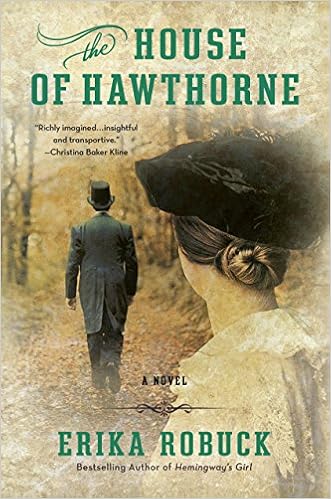|
Erika Robuck, The House of Hawthorne (New American Library, 2015) The New England Transcendentalists are my favorite group of writers: Ralph Waldo Emerson, Henry David Thoreau, Bronson Alcott, Margaret Fuller and, though he did not share the Transcendental philosophy, Nathaniel Hawthorne together created a literature that was uniquely American.
Hawthorne's time at Brook Farm -- the commune run according to Transendental ideals, a stay that resulted in his novel The Blythedale Experiment, is dismissed in a couple of pages. Why pass over so much fascinating Hawthorne biography? Because the book, narrated in the first person by Sophia, is more interested in her story than his. It details their marriage as the author imagines she saw it; Hawthorne becomes a sort of supporting character, one more thing the narrator had to put up with, to overcome or shape into the man she wants and needs, as the scene calls for. In fact, Hawthorne does not even appear until about 80 pages into the novel, and then he spends several more pages as an offstage presence until the narrator can work up her nerve to see him. Once he enters, the book becomes a chronological accounting of their marriage, centered on Sophia's struggle to be a woman of her times, while building her own career as artist. Erika Robuck does a good job placing us into the head of a 19th-century woman. Her use of language, the way she captures the voice and the tone Sophia would have used is masterful and she has done a ton of research about the period. My only complaint is that she restricts her focus too much. While dealing with a rich, expansive canvas, she only paints in a small portion of the center. 
|
 Rambles.NET book review by Michael Scott Cain 29 August 2015 Agree? Disagree? Send us your opinions!  



 |

